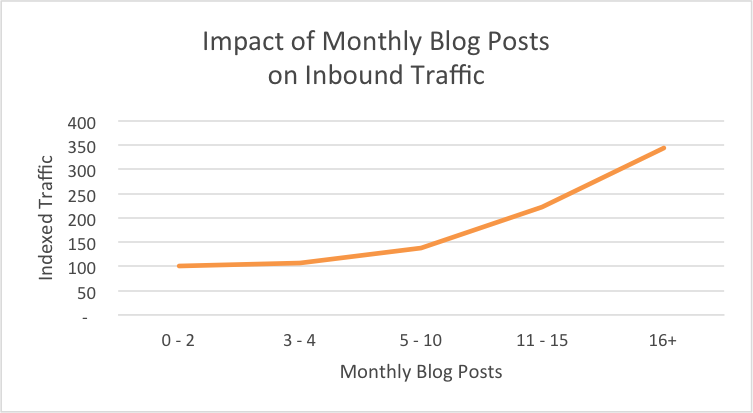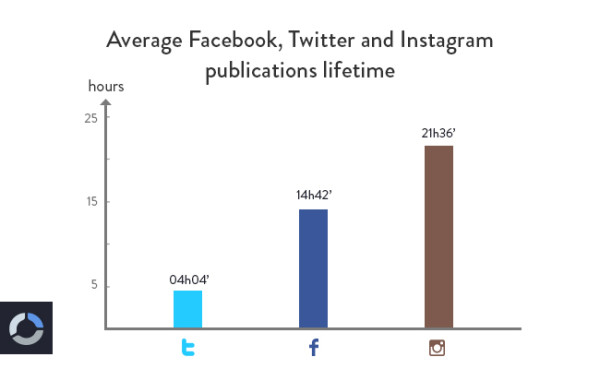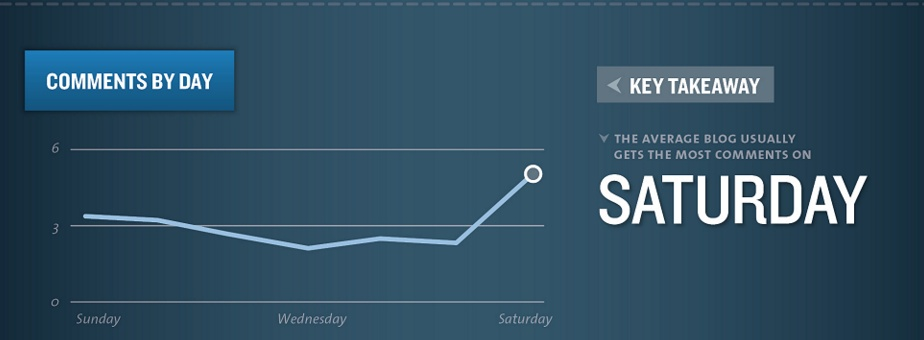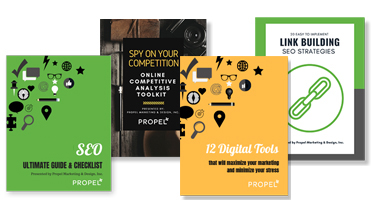Questioning how often you need to blog and how long your blog should be are smart questions with intricate answers.
Some businesses post several blogs a day, while some post only one per month, or even less. And both of these scenarios can spell great success.
Some businesses write blogs that are under 500 words, while others write blogs that are over 5,000 words. Again, both of these scenarios can spell great success.
That’s because there’s no definitive answer to how many blogs do I need to post per month? Or how long do my blog posts need to be? It really depends on several factors, such as:
- What’s your industry
- Are you B2B or B2C
- How’s your competition doing
- Are you shareable
- Are you link-building
- How valuable is your content
- And more…
So, what can you do to figure out what will work best for your business? Today we’ll go over just that.
How Often Should You Blog?
Before we jump into blog length, let’s talk about blog frequency, because your frequency can help set the tone for the length (in some cases).
Is Your Industry Ripe with Blogs?
One of the quickest ways to figure out how often you should blog, is to review your competition’s work and note how often they blog.
You may be in an industry that has virtually no bloggers. That’s great for you because you won’t need to blog nearly as much as companies that have a lot of content-competition.
For instance, if you work in news or entertainment, like BuzzFeed and HuffPost, you’re banging out hundreds of blogs a day. This is based on both customer anticipation and desire, as well as competition. They want you to get your news from them.
However, say your business is within a complex financial niche or a sewer water recycling center, your apt to find much less information circling the web on these topic, allowing you to be the voice of that industry, without going too crazy with blog posts.
Look to see where you can contribute, what’s lacking for your audience, and you’ll be able to determine a thoughtful number of blog posts.
But, that’s not all you gotta do…
Set Your Goal & Know Your Audience
We all know how important setting goals are- in any venture. But because there’s so many ways content creation can be used to your advantage, it’s best to figure out your content marketing goals ASAP.
The best way to do that is to know and understand your audience. If you’re a small business and you’re using your budget to write 20 blogs a month but you don’t have the metrics to back up that quantity- STOP!
You want to be releasing information that is unique and high-quality, and your company may not need to spend so much time (money and effort) on blogging.
And if you’re a new business, you’re going to have to run some tests in order to figure out the ins and outs of your target audience.
So, say you set a goal of reaching 1,000 visitors per month, or your goal is to get over 500 new subscribers, or to earn at least $10,000- how do you start that process when it comes to blogging?
Easy: start with writing one blog per month, checking the data; then writing two blogs a month, and checking the data. Which performed better? Keep this going until you reach a plateau.
Also, take note of what your audience is saying. Which blogs they’re reading and engaging with, which they’re sharing. All of these things will help you reach your goals, if you pay attention.
If you already have several blogs on your site, don’t forget ‘em! You can go in and update them to provide current information. When you do this, the people will come- which leads us to…
Your Current Blog Count
Okay, so, yes, having a slew of blog posts generally means you’ll get a slew of organic traffic. This has been tested by HubSpot and found true.
The more blogs you have, the more visitors you get- that doesn’t seem too hard to wrap your head around. But that doesn’t mean that those visitors are buying what you’re selling.
Let’s take a closer look at what HubSpot found with B2B companies. Those who had over 401 published blog posts received almost 3X as many leads as those who had under 200 published blog posts.
And for B2Cs, those who had over 401 blog posts received 4.5X as many leads as B2Bs with under 100 total blog posts.
So, again, we see a direct correlation between the amount of blogs published on your site and the amount of leads you get.
And in looking closer, you’ll note that the more high-quality, evergreen, existing blog content you have on your site, the less new content you’ll need to create.
Review your past data and determine the dates that you reached certain goal numbers, like 100, 300, and 400 published posts.
WordPress has plugins to help you with this called Simple Blog Stats and Jetpack, but you can also find this out through Google Analytics.
In doing this, you’ll find out the connection between your amazingly-written, previously published blogs and in increase in traffic. Has traffic made any significant boosts after achieving a certain number of published blogs?
Did you get more sales when you had more blog posts? Is your audience engaging more with older blog posts or newer?
If you’re a new blogger, don’t fret. You can maximize your time by using guest bloggers while you’re creating your unique content. You should without question take advantage of this process.
When you link to established bloggers or ask credible bloggers to write for you specifically, you’re building your own credibility (and your brand), and establishing valuable relationships- all while giving your blog a boost.
Where’s Your Traffic Originating?
The two most popular places you’ll receive traffic from are the search engines and your social media channels.
Because the search engines offer longer lasting benefits of visibility, some industries will see much more traffic coming from the SERPs (search engine results pages).
So, mathematically, these businesses wouldn’t have to create a ton of fresh content because they’ll be found easily when queeried on the search engines for some time.
However, if your audience finds you on social media, you won’t see a lot of traffic if you’re only posting once a week. Depending on the social media outlet, Over-Graph found that your post will only be seen between 4 and 21 hours.
Mathematically, you’re gonna need to post a bunch if you want your audience to see you. This requires some heavier content lifting.
A fun little way to figure out how you’re performing: create a blog post every day for two weeks. Then post 2-3 times per week for two weeks. Finally, post twice a day for two weeks. Note the differences in traffic, engagement, and leads.
And, let’s pay homage to your direct traffic. If you have an email list and your blogs are being pushed out, you’re also generating traffic to your site.
Understanding where your traffic generates will help you figure out how often you need to write high-quality blogs.
Blog Quality versus Blog Quantity
Yep, we’ve gone over it a bunch, but if you’re creating content en masse and it sucks, who cares? No one’s coming back to visit you and you’re losing leads.
If you don’t have the bandwidth to commit to eight highly educational, beneficial, engaging, smart, QUALITY pieces per month, do not create eight crappy ones. Even if your research tells you that you should be creating the eight pieces.
Writing for the sake of it isn’t sustainable and will fail you sooner or later.
Also, important to understand the time-element of your audience. If you’re creating those eight pieces and they all totally rock, but your audience doesn’t have the time to read them all, you could also be losing customers.
Nothing says annoying like getting three emails from the same business before you even opened the first. That’s an unsubscribe waiting to happen.
It’s important to gauge your users and know how they respond to you. It’s also important to stay on some kind of schedule. Don’t tell your peeps you’ll be sending them a blog every day and then do it every other day.
People don’t like to be disappointed. They may be relying on your intel, so be consistent.
If your audience likes videos, give them those. If they like highly informative longform blogs, do that. If they like a couple 600-word blogs a day, that’s your go-to. Do some testing and figure out what they want.
Providing information they can’t find with your competitors is also a big win. Like we said above, check on how often your competition posts and what they post about.
You come with ideas that aren’t currently being written about and you’ll earn yourself a following. Just ask yourself what’s missing from the conversation and start there.
Do some research to see how your competition is doing, find out their domain score, how much traffic they get, and check on their backlinks. This will help you figure out what you need to do in order to outperform them, while giving you insight into blogging quantities.
Experiments, Tests, Data, Metrics
All of these. Do them, take them, check them. You really need to understand how your blogs are working for you. Obviously they need to be well written and valuable, they need to cater to your audience, but they also need to be cost-effective.
Know how your blogs are performing and you’ll have a clear idea of how they’re benefiting you (and your users).
Some general things to know: what time should you post, where should you post, what days you should post- all of this is based on your demographic and what you’re hoping to achieve.
Check out these charts:
Posts that go live on Monday get the highest traffic:
Posts that go live on Saturday get the most comments:
If you post on the weekend, you’ll get the most social shares.
So let me ask you… What are you looking to achieve?
Blog Quantity Takeaway
When you commit your brand to publish excellent pieces of content that reaches your target audience while pulling in leads, it will pay off. Stay consistent and be as frequent as your audience desires.
How Long Should Your Blogs Be?
It’s another loaded question with no straight answer. Like with frequency, base it on your audience, your budget, and the quality of content.
And, of course, start with a goal.
Your Goal is SEO
Are you looking to gain some rank on the SERPs? Are you wanting more subscribers? Do you hope to be an authority in your industry? Are you just wanting to make money?
You need to know what the overall objective is before you can figure out how long your posts need to be.
If you’re looking for a higher rank, quantity is key (keeping in mind that quality, also plays a ginormous role). So word-count it up as much as possible (within reason) and be awesome so the search engines love you as much as the users do.
Google looks at word count and believes that the longer the post, the more likely a user will find a solution or an answer. Bonus, longer posts are linked to more. Fact.
The cut-to-the-chase answer: over 1,500 words for SEO purposes.
Your Goal Isn’t SEO
Perhaps your blog is to educate or to inspire or to amuse, word count may not play a role to you at all.
If you want to be an authority, you may want to write several smaller posts, more often. Being very poignant and relative, with lots of detail on specific matters.
But maybe you just want an audience that “gets” you. You want to be more personal and you can say what you need to say in under 300 words. Awesome. Blog done.
Strictly speaking, your blog length is complete when you’ve said what you need to say in the most effective way you can. You can’t really put a limit on that.
Blog Length Takeaway
If you hope to get to the number one spot on Google organically, consider longer posts, and if you want anything else, be a reliable source that people turn to.
When it comes down to it, just do your thing, (wo)man. Write what you need to say and say it well- and that’s your word count.











![How to Write a Professional Chiropractic Bio [Template Included]](https://propelyourcompany.com/wp-content/uploads/write-a-bio-500x383.jpg)

